TEL AVIV — “They are in our hands,” IDF spokesperson Daniel Hagari said on the huge screen that was broadcasting the tense release of the three hostages returned to Israel, Romi Gonen, Emily Damari and Doron Steinbrecher.
The statement, echoing the famous 1967 declaration after the Israeli army’s capture of the Western Wall in Jerusalem, was met with raucous cheers from the thousands gathered in Hostages Square.
Over the course of three hours, crowds had gathered to watch the livestream in almost total silence, broken only occasionally with ripples of political chants and religious songs — “All of them, now!” and “Am Yisrael Chai.”
Finally, images of the three women, released together in a single vehicle, were broadcast to whoops and tears of joy. In one image, a small smile from Damari captured the screen and the crowd.
But footage showing rows of armed Hamas fighters flanking the vehicle and appearing to stave off crowds of Palestinian bystanders rattled some well-wishers.
“I’m feeling a huge sense of relief obviously but it’s also scary seeing Hamas like that,” said Gila Levitan, a psychotherapist and tour guide who is originally from Australia. “How scared they must be during the transfer, and also seeing all those crowds behind them. Does Hamas have control of them? Will they be able to control them in future transfers?”
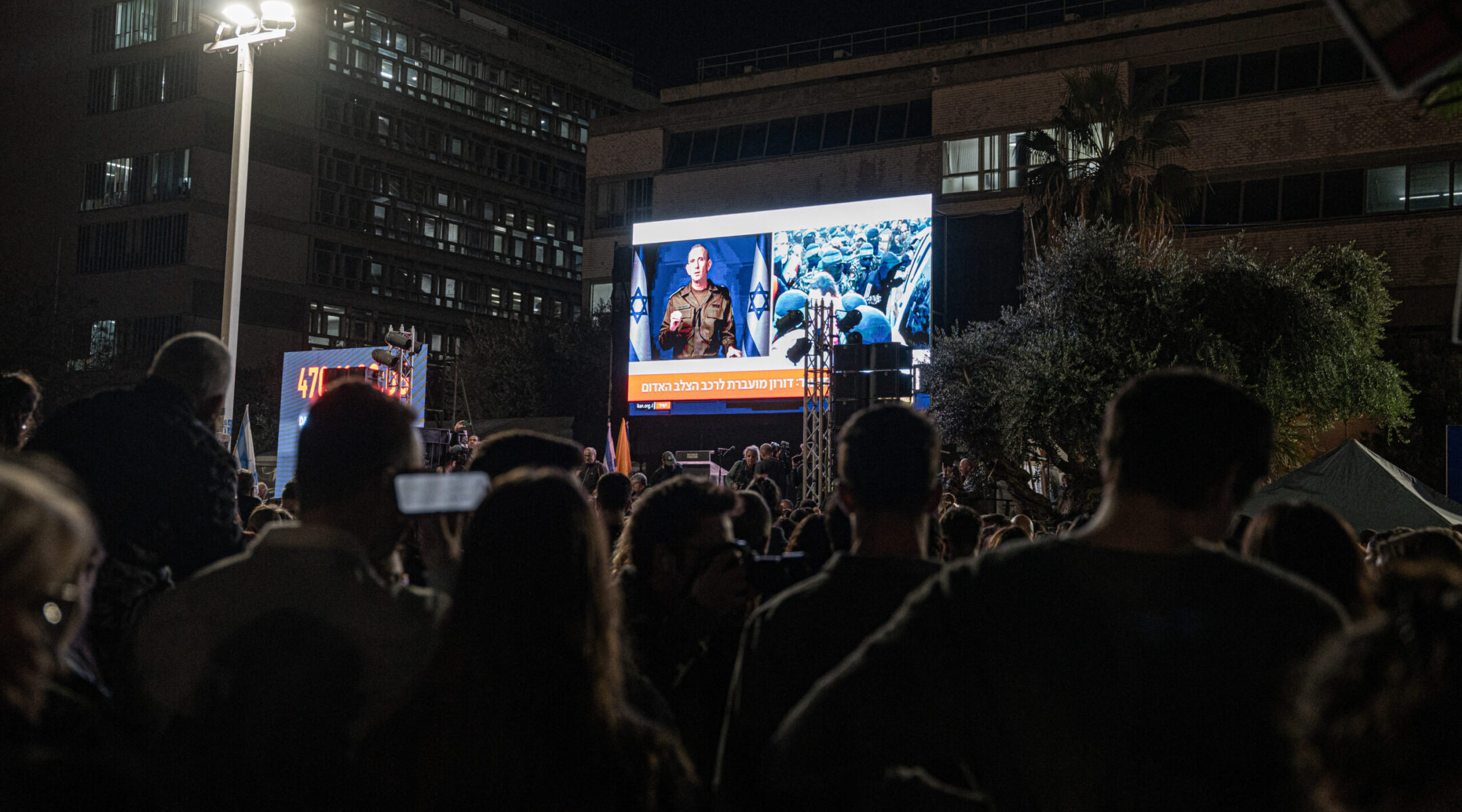
A screen broadcasting at Hostages Square is split between the Israeli army spokesman and a scene of Hamas fighter surrounding a van containing Israeli hostages on the verge of release, Jan. 19, 2024. (Ori Aviram/Middle East Images/AFP via Getty Images)
The footage of the Hamas fighters also offered a stark reminder that the terror group remains in charge of Gaza, despite 15 months of war that has eliminated many top leaders, decimated the ranks and battered the territory.
Israeli officials say just two of the group’s 24 battalions remain operational, and President Joe Biden said on Sunday that he was not worried about the group’s resurgence. But the organization has been regrouping under the leadership of Mohammed Sinwar, the younger brother of the leader Israel assassinated in October, and Secretary of State Antony Blinken said this week that the U.S. assessment was that Hamas had gained as many fighters as it has lost.
Visually, at least, the handover of the three women on Sunday was virtually identical to those that unfolded in the last week of November 2023, when 105 hostages, mainly women and children, were released during a temporary truce. Masked Hamas fighters in uniform, with green headbands, rode with the women before sending them off into the arms of the Red Cross — reportedly with “gift bags” containing maps of Gaza and certificates of their captivity.
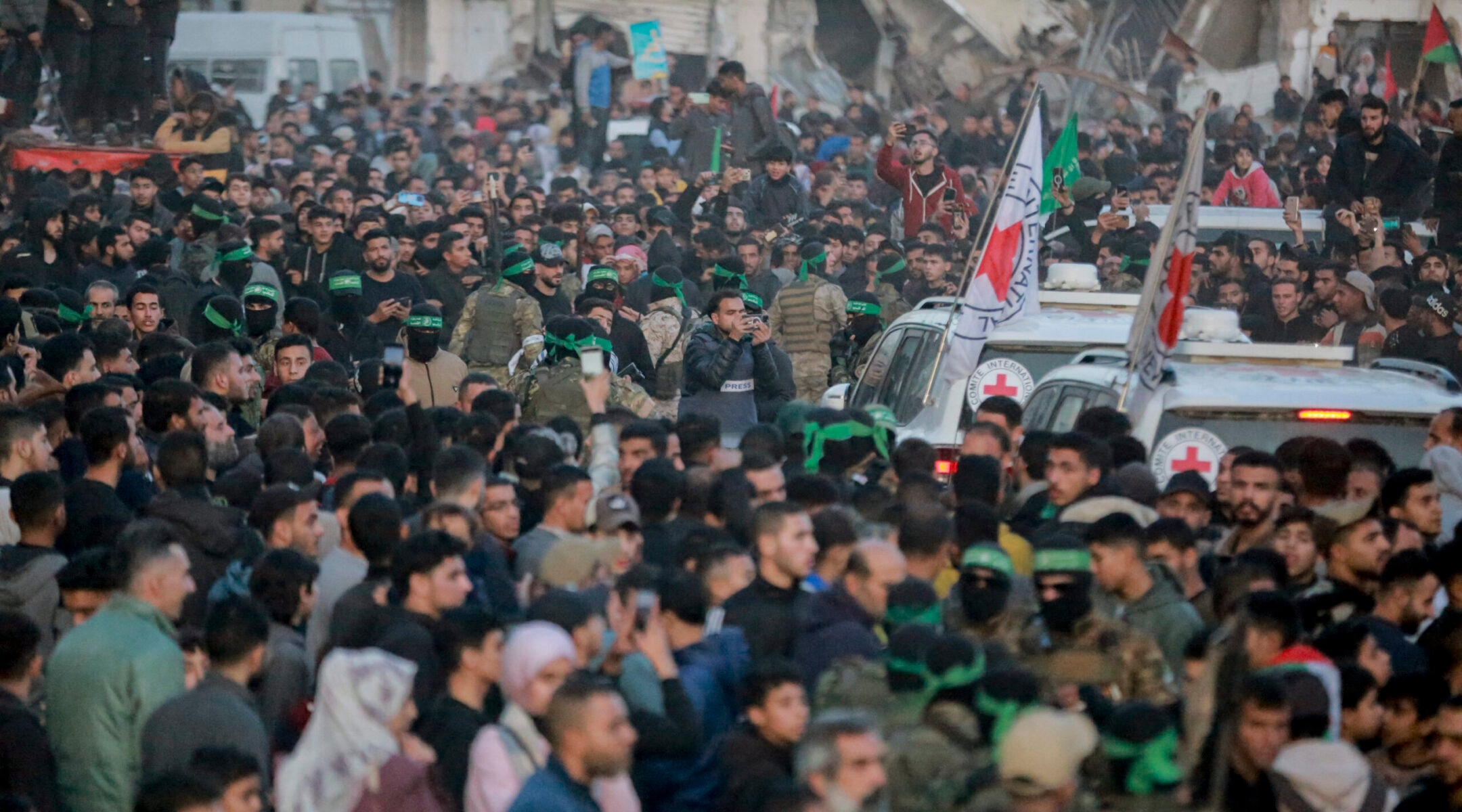
Hamas fighters escort a Red Cross vehicle to collect Israeli hostages released after a ceasefire agreement between Israel and Hamas took effect, in Gaza City Sunday, Jan. 19, 2025. (Photo by Abood Abusalama / Middle East Images / Middle East Images/AFP via Getty Images)
“It’s scary to think they still call the shots,” said Hodaya, who declined to give her last name.
Hodaya went on to say that she was concerned about the price of the hostage deal, in which nearly 2,000 security prisoners are expected to walk free.
“It’s nerve-wracking because it’s such a high price to pay, but at the same time every price is right,” she said. “This is how much we value life. We just have to trust that the state will know how to deal with it.”
For some in the crowd, even seeing the women alive did not offer relief.
“I can’t breathe. I’m very nervous, I don’t believe or trust Hamas. I’m not going to relax until I see their faces crossing the border,” said Adi, a reservist who declined to give her last name. “The Gazans look like they’re ready to hurt them.”
Shay Dickmann, cousin of Carmel Gat, who was found dead in a Hamas tunnel in Rafah along with five other hostages at the end of August, also said she had mixed feelings.
“I’m very excited but also scared this will fall apart,” she said, adding that her fears were exacerbated because she had learned her cousin would have been released if the November 2023 truce had held just one more day.
“She could have been here with us today, waiting for these women to be released,” Dickmann said. “But she’s not. We have to make sure everyone comes back.”
Like Hodaya, Dickmann said that concerns over future violence — including hostage-taking at the hands of released terrorists — was secondary.
“The most important thing is to save them now,” Dickmann said. “We’ll worry about later, later. Hopefully then we’ll know what to do.”
Some in the crowd have been regulars at the weekly rallies in Hostages Square. Shmuelik Warshaw, TK, is one of them. When footage of the Red Cross car appeared on screen, he helped his wheelchair-bound daughter, Einav, to her feet before embracing her tightly, tears streaming down both their faces.
“This is one of the best days for the people of israel. Feeling the togetherness of being here is amazing,” he said. “And it’s also a great day for democracy. Not just ours, but also others who helped us — like the USA, Germany and UK.”
Warshaw echoed the sentiments of so many others. “We don’t just want the three of them, we want all of them. We won’t rest until they’re all home. These families can’t suffer any more.”
Holding a sign bearing her former pupil’s name, Chani Nachmani — who taught Emily Damari in elementary school for four years — has also been attending Hostages Square every week. On Sunday, she had a new purpose.
“Today, I came here to return the poster,” she said. “For the first time, I’m not going home with it.”
Others were participating in the recent Israeli ritual for the first time. Lev Kandinov, who was visiting Israel with his family from Hollywood, Florida, said it was his first time in Hostages Square.
“I can’t describe my feelings being here. It’s very, very overwhelming. I’m very happy we are finally at this point,” he said. “Unfortunately, the price is really high — not only the amount of terrible monsters that are being released but also all the soldiers who have been killed. Still, every life is precious.”
Influencer Daniel Braun shot footage in the square to raise awareness of the plight of the hostages, which, he said, was still unknown in so many parts of the world.
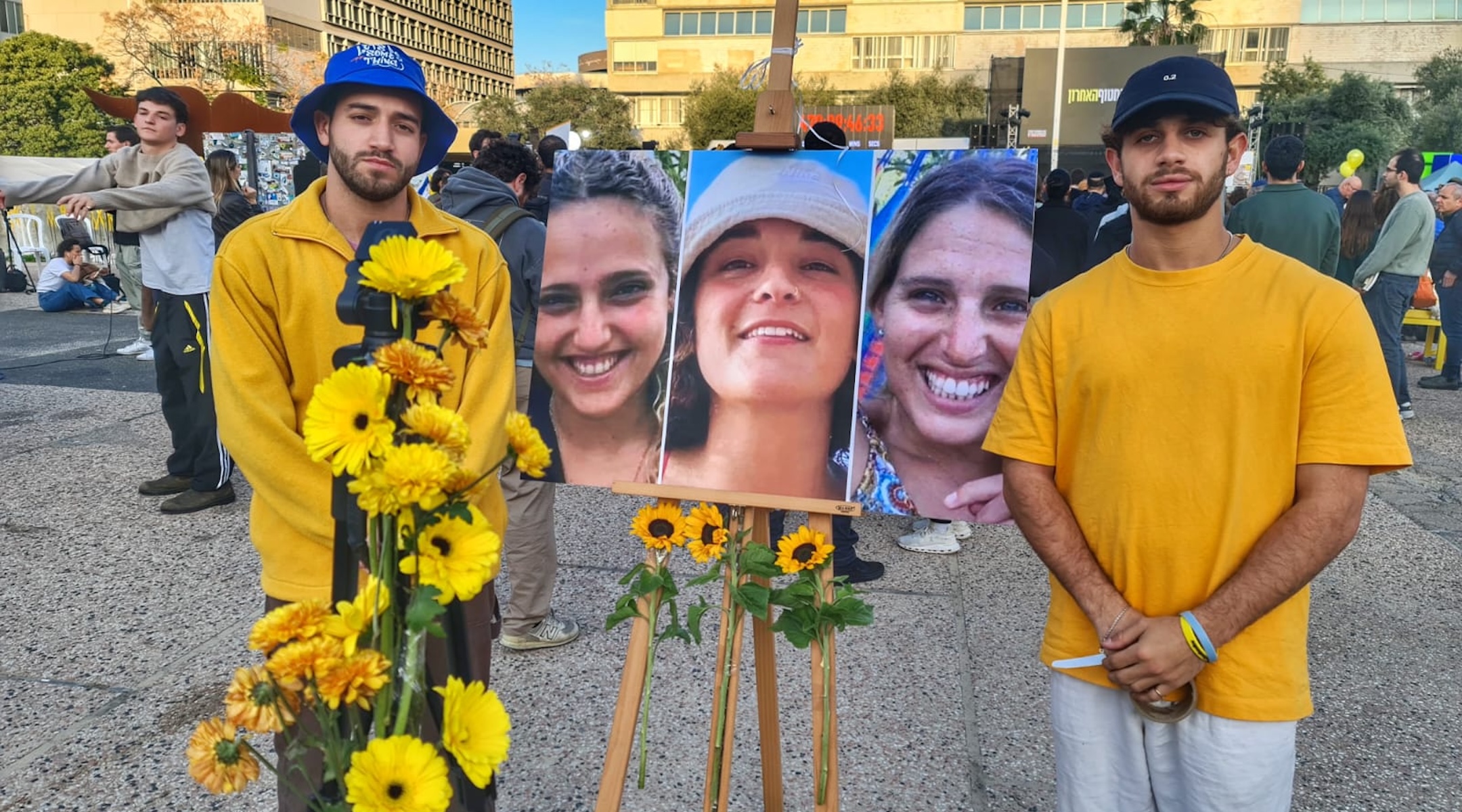
Attendees at Hostages Square in Tel Aviv pose with pictures of the three women released by Hamas on Jan. 19, 2024. (Deborah Danan)
Britons Sam Reubens and Heski Strassman, both from Manchester, made aliyah after Oct. 7, in response to growing antisemitism in the United Kingdom. The two waved giant Israeli and British flags in honor, they said, of British-Israeli Emily Damari.
“Her mother, Mandy, speaks with unbelievable courage and has touched all of our hearts,” Strassman said. The Damaris have refused to grant interviews throughout most of the duration of Emily’s captivity, and only recently did Mandy finally agree to speak out about her daughter.
“We want to show Jews in Britain that we stand with Emily’s family. But also to say we want them all back,” Reubens said.
Menashe Bohbot, uncle to hostage Elkana Bohbot, held a sign declaring, “Don’t leave him behind!” After the gathering at hostage square, Bohbot said he planned to continue on to a protest on Begin Road, not five-minute walk away, to call for the return of the rest of the 94 hostages, including his nephew.
Abducted from the Nova music festival, like Gonen, Elkana Bohbot, 35, was filmed being beaten by his captors on Oct. 7. He is not on the list of 33 hostages set for release during the ceasefire’s six-week first phase.
Levitan was relieved when she saw the three women released on Sunday walking on their own. But she said she knew that the roller coaster of emotions unleashed by the first day of the ceasefire — optimism, fear, anger at Hamas — would continue.
“We’re all holding our breath — it’s nail-biting,” she said. “The whole nation is being held hostage right now. And scary to think that we’re going to go through this so many times.”
Keep Jewish Stories in Focus.
JTA has documented Jewish history in real-time for over a century. Keep our journalism strong by joining us in supporting independent, award-winning reporting.

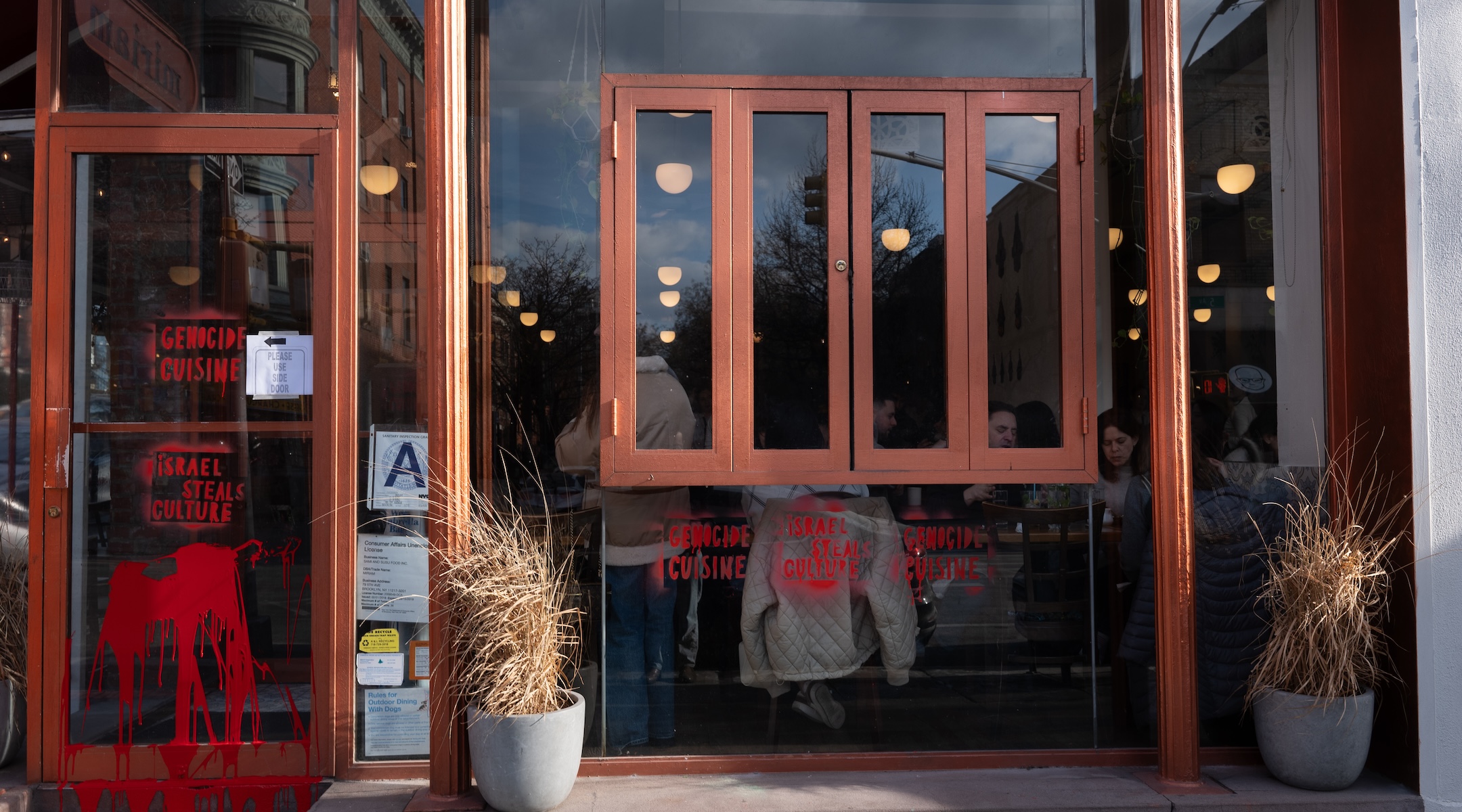
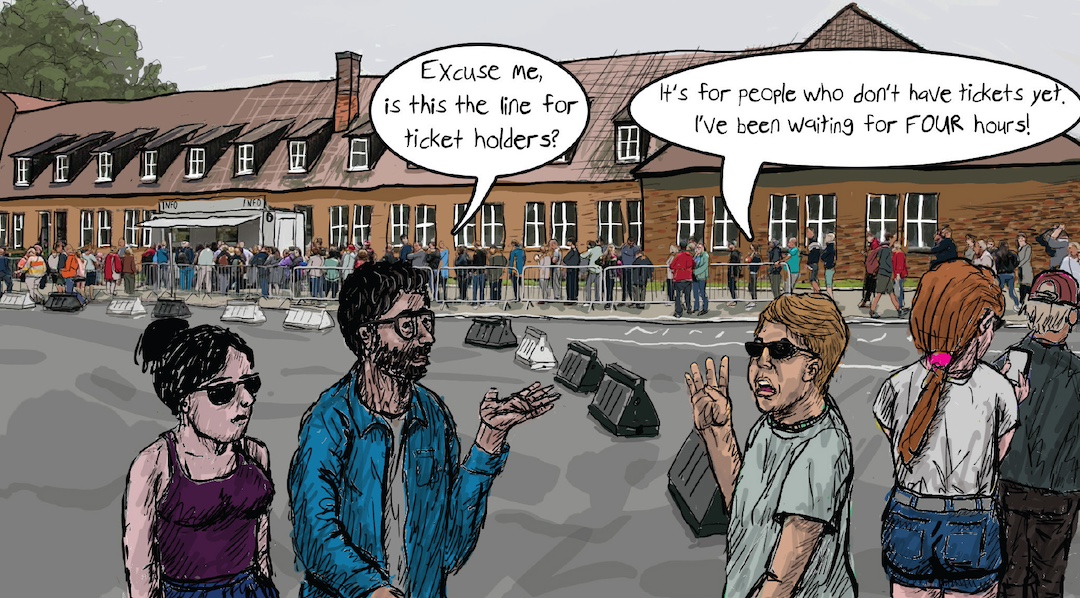
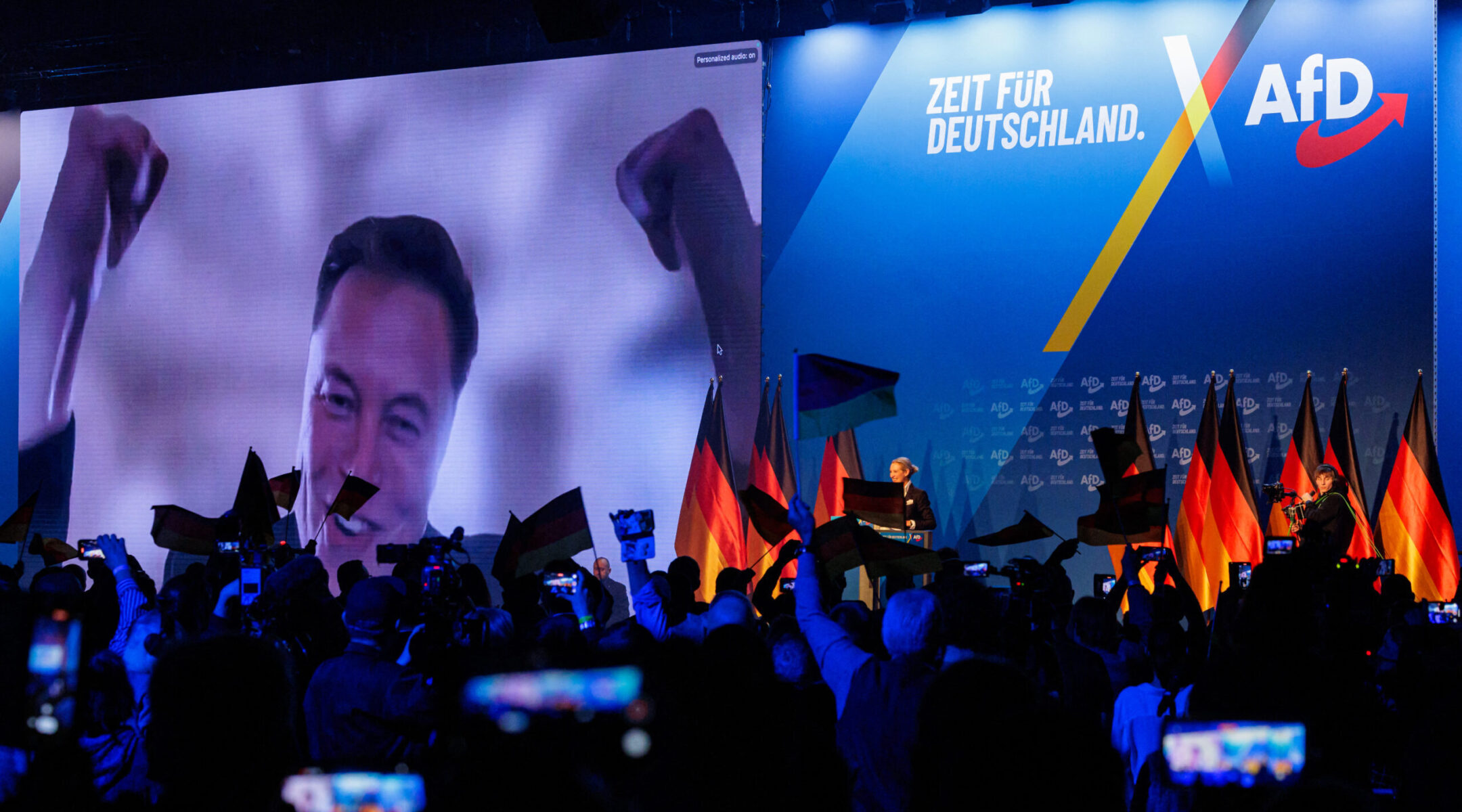





 English (US) ·
English (US) ·